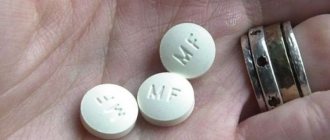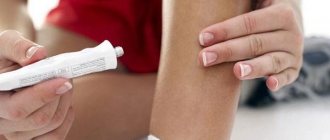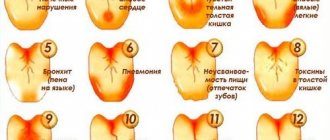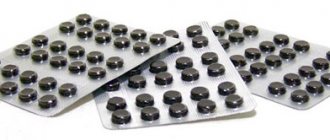What can be done after an abortion, and what cannot be done and, on the advice of a gynecologist, is best avoided? Many women pay the consequences for not following their doctors' recommendations. Why do gynecologists recommend undergoing treatment of the uterus and appendages and which one? Regardless of the technique, restoration of the cycle after an abortion and treatment of the endometrium of the uterus are necessary for every woman. After all, artificial termination of pregnancy adversely affects the health of the failed mother and requires certain efforts to help the body normalize reproductive and sexual function.
The duration of recovery depends on the duration of the interruption and the abortive method. After medical interruption, the female genital organs return to normal much faster, but surgical intervention usually requires quite serious rehabilitation measures. How long does it take to recover after an abortion, what to do for the best healing effect?
In this material we will talk about what is possible and what is not possible after an abortion operation, what are the main recommendations of a gynecologist, as well as what to do after an abortion and where to go in Moscow for rehabilitation.
Restoration of the menstrual cycle
Termination of pregnancy is a severe stress for the body, therefore, after an abortion, the regulation of the functions of the ovarian-menstrual cycle is disrupted. Due to the significantly increased load on all organs during gestation, the hypothalamus is in a state of excitement, which affects the work of the pituitary gland, which ceases to synthesize gonadotropins (FSH and LH) in the required proportions.
And instead of the periodic release of luteinizing hormone, characteristic of the normal menstrual cycle, its monotonous increased secretion is noted, as a result of which the ovaries enlarge and begin to synthesize estrogens. But with the physiological completion of pregnancy, all changes that occur disappear without consequences for health. With forced termination of pregnancy, the anatomical stage of menstrual dysfunction develops, which leads to the development of the following pathological conditions:
- insufficiency of the luteal (phase 2) cycle;
- secondary polycystic ovary syndrome;
- hyperplastic processes of the endometrium;
- uterine fibroids;
- syndrome or Itsenko-Cushing's disease.
The listed pathology is caused by excess production of LH after its previous monotonous secretion, so the restoration of ovarian-menstrual function sometimes takes more than one month, in some cases several years.
How many days after an abortion will menstruation begin is difficult to answer, it depends on a number of factors:
- woman's age;
- existing chronic diseases;
- method of abortion;
- gestational age when the abortion was performed;
- during the postoperative period.
Normally, a healthy and young woman should begin her period after an abortion in about a month, or rather, after the period of time that lasted from the previous menstruation to the current one. To calculate the approximate date of the first menstruation after the procedure, the starting point (the first day of the cycle) should be the day of the abortion.
However, artificial termination of pregnancy can not only lengthen or shorten the duration of the menstrual cycle, but also change the nature of the discharge. It is possible that scanty, spotting discharge may appear after an abortion, which continues for one to two menstrual cycles and is associated with incomplete restoration of the endometrium after the procedure.
If scanty menstruation persists for a longer time, this is a reason to consult a doctor, as well as for an extensive examination. A decrease in menstrual blood loss may be due to two reasons.
- The first is a functional failure in the production of hormones by the ovaries, pituitary gland and hypothalamus. Often, a similar condition is observed after a medical abortion, which is associated with taking very large doses of antiprogestins and requires the appointment of appropriate hormonal therapy.
- The second reason is mechanical damage to the endometrium (overly “thorough” scraping of the mucosa and traumatization of its deep layers) and/or the cervix (cervical canal atresia). When the endometrium is injured, synechiae (adhesions in the pelvis) are formed in the uterine cavity, which reduce not only its volume, but also the area of the endometrium, which is rejected during menstruation.
In addition to opsomenorrhea (scanty menstruation), amenorrhea and infertility may occur. Intrauterine synechiae requires hysteroscopic dissection.
If your periods after termination of pregnancy become heavier and repeat for several cycles, you should also be wary. Heavy and prolonged menstruation may indicate:
- or about the development of endometrial hyperplasia
- or about adenomyosis (endometriosis of the uterus).
And although menstrual flow after an abortion can be restored immediately, that is, it begins after 21–35 days, ovulation may be absent for two to three menstrual cycles, which is considered normal. If anovulation lasts longer, but there are no visible cycle disorders, you need to start looking for the cause of this pathology.
Contraindications and precautions
Contraindications for treating gynecological diseases with suppositories include intolerance to any drug.
Such treatment with vaginal suppositories is also prohibited if a woman has:
- cysts;
- erosive formations;
- cracks in the vagina.
- Rectal suppositories are contraindicated for:
- hemorrhoids;
- presence of cracks in the anus;
- inflammation of the intestines;
- bleeding in the intestines.
When taking suppositories, the following precautions should be taken:
- Before use, read the instructions for use. If there are contraindications, it is better to refuse use. Often, drugs cannot be used for diseases of the kidneys, liver, hemorrhoids, during lactation and breastfeeding.
- Maintain hygiene when inserting suppositories.
- Use suppositories only on the advice of a doctor.
- Is pre-douching necessary?
- Does the introduction of suppositories depend on the menstrual cycle?
- Frequency and duration of use of suppositories
- Is it worth stopping sexual intercourse?
Discharge after the procedure
Immediately after an uneventful abortion, the discharge should normally be moderate, with a small number of clots. However, both the volume and duration of bleeding depend both on the duration of the terminated pregnancy and on the method of termination.
- Small and even scanty discharge is observed after a vacuum abortion. This is explained by the short duration of pregnancy, and, accordingly, minor trauma to the uterine mucosa.
- After a surgical abortion, especially at 10–12 weeks, the discharge will be more intense and prolonged.
How many days after an abortion does bleeding continue? The duration of bleeding after a well-performed procedure is normally 7, maximum 10 days. If the discharge continues for more than 10 days, the first thing to exclude is the placental polyp, which is removed by repeated curettage of the uterine cavity. That’s why it’s so important to see a gynecologist after 10–14 days, who will not only palpate the uterus and suspect subinvolution or placental polyp, but also prescribe a pelvic ultrasound.
If clots and heavy bleeding occur after an abortion, regardless of when it was performed, a day or 2 weeks ago, you should immediately seek qualified medical help, since the presence of remnants of the fertilized egg or hematometer in the uterine cavity cannot be ruled out.
Approximate treatment regimens
What other antibiotics are most often prescribed by gynecologists after a medical abortion? This is often Doxycycline. This is a powerful drug that should be prescribed immediately after an abortion. Take it twice a day, 1 capsule once a day. It is not recommended to take it for more than 7 days; most often, five is enough.
Antimicrobial drugs should often be taken in combination with Doxycycline. This could be Metronidazole or Trichopolum. Their spectrum of action is very wide; the drugs help to avoid complications during any surgical interventions. The standard dosage is 2 tablets three times a day. After completing the course, on days 5-7, a single dose of Fluconazole or Flucostat is recommended. These medications will help maintain normal vaginal microflora.
You should take one capsule once, and then begin to restore the intestinal microflora. For this, “Beefy-form” capsules are best suited, 2 capsules per day. The course is now almost complete. And to maintain your body, include more fresh vegetables and fruits, as well as natural juices, in your diet.
Abdominal pain in the post-abortion period
After an uncomplicated termination of pregnancy, moderate pain in the lower abdomen or slight discomfort is normally possible. Such sensations can last up to 7 days and do not particularly bother the patient. If your stomach hurts so badly that it is impossible to lead your usual lifestyle and leads to loss of ability to work, this is a reason to immediately contact a specialist.
- Cramping and sharp pain indicate the remains of placental tissue and embryo in the uterine cavity and the development of hematometra
- Aching, constant pain combined with an elevated temperature after an abortion are a sign of the onset of inflammation, which can be triggered by sexually transmitted infections that remain asymptomatic for some time.
- In general, in the first 2 days after the procedure, a slight increase in temperature (37.2 - 37.3) is not a pathology, but only reflects the body’s reaction to surgery. Low-grade fever is also possible on the day of a medical abortion as a reaction of the thermoregulation center located in the brain to taking high doses of hormones.
- But if a high temperature (more than 37.5) persists for more than 2 days, this is a sign of trouble and a reason to seek medical attention. help.
To prevent the development of inflammatory diseases after medical termination of pregnancy, patients, especially those with unsatisfactory results of smears and blood/urine tests, are prescribed a prophylactic course of broad-spectrum antibacterial and anti-inflammatory drugs for 3 to 5 days (maximum 7 days). In the case of a confirmed inflammatory process, the dose of antibiotics is increased and the course lengthened.
Also, to prevent septic post-abortion complications, the doctor will definitely recommend staying away from drafts and colds, dressing warmly in damp and cold weather, and taking a shower daily. Equally important is following the rules of personal hygiene:
- treating the external genitalia with water at least 2 times a day;
- timely change of pads and underwear, since the blood spilled from the uterine cavity and retained on intimate hygiene products is a good breeding ground for microorganisms, which contributes to their active reproduction and penetration into the uterus, where they cause inflammation.
Every woman who has artificially terminated a pregnancy should know that drinking alcohol in the post-abortion period is strictly prohibited, especially if she is taking antibacterial drugs.
- Firstly, under the influence of alcohol, antibiotics are destroyed, which means that taking them will be absolutely useless and will not reduce the risk of developing post-abortion septic complications.
- Secondly, alcohol reduces the tone of smooth muscles (the myometrium consists of smooth muscles), which prevents its contraction and involution (return to its previous size) after removal of pregnancy and can cause bleeding.
What to take
No woman should take medications purchased on her own initiative. Despite the abundance of antibiotics with a wide spectrum of action, you will not be able to take into account the individual characteristics of your body and the operation performed. If your friend took antibiotics after an abortion, this does not mean at all that they will suit you.
For optimal treatment after a medical abortion, a woman is prescribed a number of medications that together help the body quickly cope with the stress it has experienced and establish the normal functioning of the reproductive system. This:
- antimicrobial agents;
- contraceptives that can protect against subsequent unwanted pregnancies. In addition, modern OCs help regulate hormonal levels, which may malfunction after an abortion;
- vitamins that generally support the immune system.
Uterus after abortion
The most damaged organ after an abortion is the uterus. The longer the abortion was performed, the more significant its damage. This is especially true for instrumental curettage of the embryo.
The uterus after an abortion begins to contract immediately after the embryo is removed and returns to its normal or almost normal size by the end of the procedure. However, a wound surface is formed on the uterine wall (in the place where the fertilized egg was attached), which requires a certain time period for its healing and restoration of the endometrium, ready for transformation and rejection during menstruation.
- Normally, this takes 3–4 weeks, and by the beginning of a new menstruation (after a previous abortion), the uterus has its normal size and transformed epithelium.
- But if, upon examination 10 to 12 days later, which is mandatory after the procedure, an enlarged, softened and painful uterus is palpated, and the discharge is dark red or the color of “meat slop”, with an unpleasant odor, scanty or moderate, then we are talking about inflammation of the organ.
The causes of endometritis can be a poorly performed abortion (remnants of the fertilized egg), activation of a latent infection or infection during the abortion (violation of aseptic standards) or after (non-compliance with recommendations), or the formation of hematometra. Therefore, all women after an abortion are prescribed not only a follow-up visit to the gynecologist, but also a mandatory ultrasound, during which it is confirmed that the uterus is “clean”.
Sex life after abortion
Based on the above, it becomes clear that sex after an abortion must be excluded. The gynecologist will definitely warn a woman who has undergone an abortion procedure that she should observe sexual rest for at least 3 weeks (after a mini-abortion and pharmacological abortion).
Over the specified period of time, the uterus should return to normal. But in the case of instrumental or classic abortion, especially in long periods, the prohibition of sexual activity is extended to 4 weeks, optimally until the end of menstruation.
- Firstly, this is due to the high risk of infection of the uterus and the development of inflammation
- Secondly, sexual intercourse can disrupt the contractile activity of the uterus, which will provoke its subinvolution or hematometra, and again lead to inflammation.
- In addition, having sex can cause pain after an abortion.
The safest way
If we are talking about termination of pregnancy, then the word “safety” will not be the most correct.
But if you choose the lesser of evils (of course, after timely contraception), then it will still be a medical abortion. It is performed at the earliest stages, when some women are not yet completely sure of their position. However, there are two sides to the coin. In the short term, there is a possibility that the fetus cannot be removed, and after a few weeks mechanical cleaning will have to be performed. And if the doctors made a slight mistake, and the period is already more than seven weeks, then the vacuum installation will only damage the fetus without removing it entirely.
Probability of pregnancy after abortion
Not many former clients of the abortion clinic know that after an abortion you can get pregnant, and very quickly, even before the onset of your first menstruation. In this case, a parallel can be drawn with pregnancy, which occurs immediately after the birth of a child if a woman refuses lactation.
After the sudden termination of pregnancy, the body begins to actively rebuild and returns to its usual rhythm. That is, the ovaries are preparing for a new menstruation; under the influence of pituitary gonadotropins (FSH and LH), they gradually produce estrogens and then progesterone, which stimulates the maturation of follicles and ovulation.
Therefore, in more than half of the cases, a woman’s first ovulation occurs within 14–21 days. And if we take into account the lifespan of sperm (up to 7 days), then pregnancy after an abortion is very likely.
On the other hand, if a woman, after a recent termination of pregnancy due to circumstances, wants to give birth to a child, then it is necessary to abstain from pregnancy for a certain time.
It is believed that the minimum period of birth control after a previous abortion is 6 months. It is optimal if the desired pregnancy occurs within a year, and after a thorough examination and treatment of identified diseases.
It is during this period of time that the body will fully recover, and the risk of pregnancy complications associated with its previous violent termination will noticeably decrease (isthmic-cervical insufficiency, hormonal imbalance, improper attachment of the fertilized egg, intrauterine growth retardation).
Also, speaking about pregnancy that occurred immediately after an abortion, we should also talk about tests to determine it. After an abortion, the test will be positive, and this result will remain for another 4 to 6 weeks (if the termination of the pregnancy was long, the positive result will remain longer).
HCG is not immediately destroyed and excreted from the woman’s body, this process is quite slow, therefore a positive result cannot be considered a sign of pregnancy (the case of either the ovum not being removed during an abortion, or the onset of a new one). The only thing that can cast doubt on the “positivity” of the test is that the second line in each new test will be lighter (see pregnancy test).
To accurately establish the fact of pregnancy, an ultrasound is performed, and in some situations, a blood test for hCG several times in a row; in the case of a progressive decrease in the level of hCG in the tests, a false positive test result is indicated.
Do antibiotics harm the body?
Doctors hear this question several times a day. Of course, these are far from vitamins, and they have quite a strong effect on our body. However, if we are talking about the prevention of inflammatory processes, complications, repeated operations, which in the most severe cases lead to final infertility, then taking antibiotics is the least of the evils.
Therefore, your task is to choose a competent doctor and entrust him with control over rehabilitation therapy. It is he who will decide whether to take antibiotics after an abortion, which ones are ideal in your particular case. He will also have to calculate the correct dosage, duration and intensity of treatment. Most of the modern drugs are well tolerated and relatively safe for the body.
Menstrual cycle
Contraception issues
Immediately after an abortion, or better yet before the procedure, it is necessary to select a method of contraception. The optimal solution in this case is to take hormonal contraceptive pills, as they mitigate the effects of hormonal stress, prevent neuroendocrine disorders, and, in addition, significantly reduce the risk of developing septic complications after abortion, which is explained by the following mechanisms:
- reducing the amount of blood lost during menstruation (blood acts as a breeding ground for microbes);
- thickening of the cervical mucus, which not only prevents the penetration of “live creatures” into the uterine cavity, but also pathogens;
- the cervical canal does not expand so significantly during menstruation (protection against infection);
- the intensity of uterine contractions is reduced, thereby reducing the risk of the spread of pathogens of infectious diseases from the uterus to the tubes.
It is recommended to take low-dose oral contraceptives, the dose of ethinyl estradiol in which does not exceed 35 mcg, since estrogens increase blood clotting, and hypercoagulation is noted during the first 20 to 30 days after termination of pregnancy. Such drugs include Regulon, Rigevidon, Mercilon.
Taking the pills should start on the day of the abortion and continue according to the schedule. The day of termination of pregnancy will be counted as the first day of a new cycle.
Rehabilitation treatment
It is extremely important to help the body resume its natural functioning as quickly as possible. Termination of pregnancy is a gross intervention in hormonal levels, which has an extremely negative impact on the physical and mental state. Antibiotics after an abortion should help the body recover and prevent the possibility of developing possible inflammation.
The psychological state of a woman is of no small importance. Therefore, if the decision to have an abortion was difficult for you, you need to seek help from a professional psychologist. Be that as it may, there are circumstances in which it is more humane to end a life at its very beginning than to then leave the baby in an orphanage.
Question answer
Is it possible to take a bath after an abortion?
During the post-abortion period (about a month), taking a bath is not recommended, as this may cause bleeding or the development of endometritis.
Is it permissible to use sanitary tampons after an abortion?
For intimate hygiene products after an abortion, preference should be given to pads, and the use of tampons is strictly prohibited, since bloody discharge absorbed by the tampon remains in the vagina with it and is an excellent environment for the proliferation of microorganisms, which increases the risk of developing post-abortion inflammation.
How long after an abortion can I go to the swimming pool?
Visiting the pool, as well as bathhouses and saunas (air temperature is too high), swimming in open water should be postponed for at least a month, until the end of the first menstruation. Otherwise, you can “catch” an infection or increase bleeding, even bleeding.
Can I exercise after an abortion?
If the termination procedure “passed” without complications and the woman’s condition is satisfactory, then you can return to sports within a couple of weeks after the termination of pregnancy. But the load should not be so intense during the month after the abortion.
Why does the breast hurt and bother you after an abortion (the abortion was performed 3 days ago)?
Perhaps the term of the terminated pregnancy was long enough, and the mammary glands began to actively prepare for the upcoming lactation. But a suddenly terminated pregnancy led to a hormonal imbalance; the body and mammary glands, among other things, did not have time to rebuild, which led to chest pain.
Are there any restrictions on food after an abortion?
No, you do not need to follow a special diet during the post-abortion period. But if the abortion took place under general anesthesia and the anesthesiologist diagnosed an allergic reaction to the anesthetic, he may advise further adherence to a hypoallergenic diet (limiting chocolate, citrus fruits, coffee, seafood and other allergenic foods).
Medical recommendations
Speaking about which antibiotics to take after an abortion, it should be noted that both the duration and intensity of therapy should be determined by a specialist. If your condition worsens, immediately seek correction of your treatment regimen. Usually the duration of treatment is no more than 7 days. At the same time, doctors most often give preference to the drugs “Gentamicin” and “Netromycin”.
They are able to prevent and stop inflammation that is already beginning, and therefore, in some cases, save lives. For some purposes, it is possible to prescribe Amoxicillin, although it began to be used relatively recently. But the dosage is individual, the doctor must weigh the pros and cons and make a decision.
The recovery period is very important; the preservation of her reproductive functions and fertility depends on how accurately the patient follows gynecological instructions. It is important for girls to protect themselves from hypothermia and drafts, colds, and dress warmly, especially in cold or damp weather. Hygiene procedures must be carried out daily.
Since bleeding occurs after an interruption, the pad must be changed every 3 hours to avoid infection due to blood stagnating in the pad. But tampons cannot be used after an abortion, because the blood absorbed into them serves as a favorable environment for the proliferation of pathogenic microorganisms that provoke uterine inflammatory complications and other pathologies.










